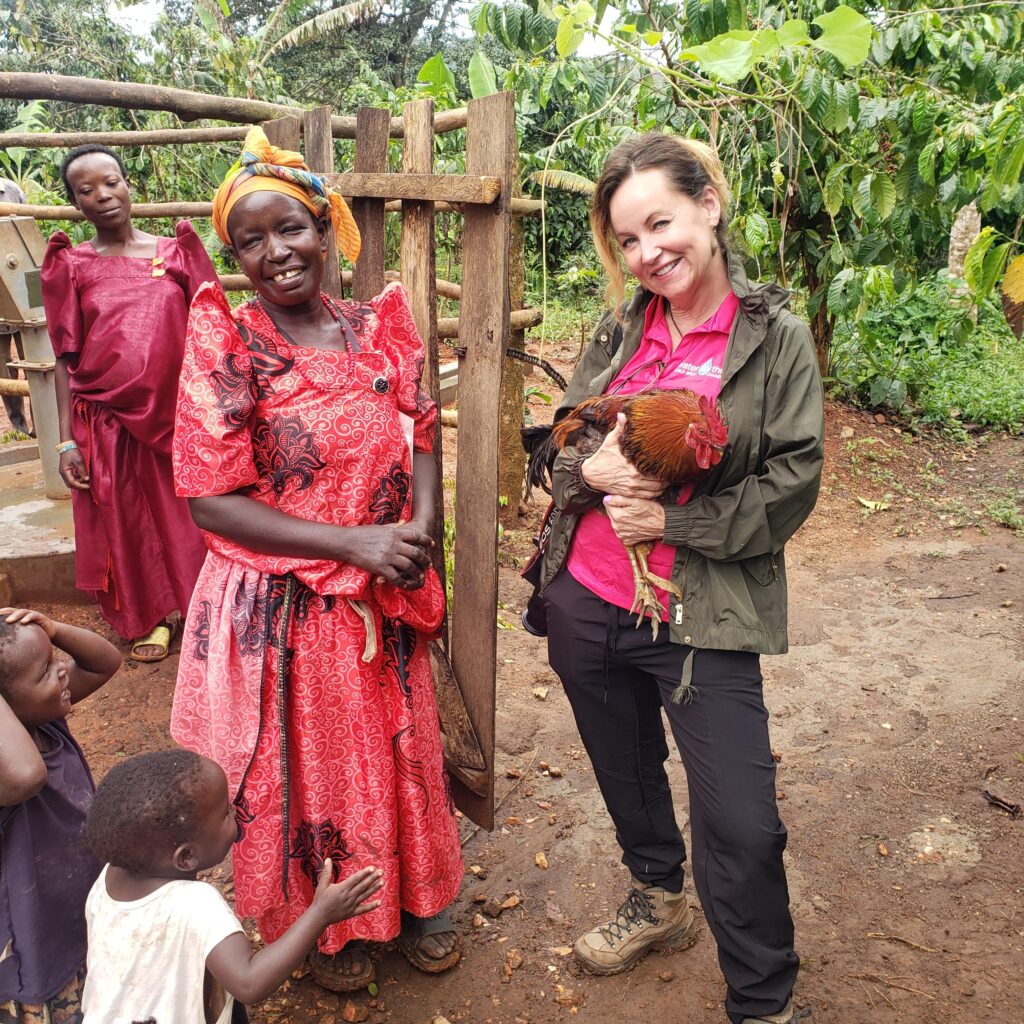
Return to Tanzania
It’s been two years since the pandemic changed our worlds and how we conduct business. I had just returned from travels to the three countries where we implement water projects at the end of February 2020, when most of us went home for what we thought at the time would be temporary.
Returning to Africa and getting back to the important work at hand feels so good; I’ve been in Tanzania now for almost a week. I was a bit anxious with all of the new COVID protocols and the process has proven to be as complicated as I anticipated, but more about that later.
The trips to visit our water projects has many objectives. Primarily, the work is inspected as part of quality control and making certain that the beneficiaries are benefitting from clean water.
In the past, donors have joined these vision trips which is another objective – to witness the incredible life transformation that happens to the individuals who now have a clean water source.
Additionally, this trip has us interviewing new perspective partners with whom we might collaborate with in expanding our work. Our implementing partners are key to the work. They are nonprofits and are registered to conduct work in their countries.
KINNAPA is our partner in Tanzania. They were founded the early 1990s to address the land rights of the pastoralists and hunter gatherers. The Maasai are the most well-known of those groups.
Throughout history they have been known as fierce warriors whose rite of passage in years past was the killing of a lion. Today, they are semi-nomadic and follow their cattle herds, as they move for grazing lands. They are well known for their beauty, tall stature, body ornamentation and wearing of the Shuka, or red striped cloth, they used to cover their bodies. Cattle is how they measure their wealth and also supplies most of the dietary needs including meat, milk and blood. Apparently, I’d bring 1,000 cows on the marriage market.
Our site visits included two schools. The first was a primary school with over 1,500 students. They sang a greeting song and a song about water. The 2nd was a secondary school with 440 students. The schools both have additional needs, but they were thankful that the students were spared walking for water; water from the wells served several purposes including watering plants on the school grounds, cooking and creating building materials (like cement).
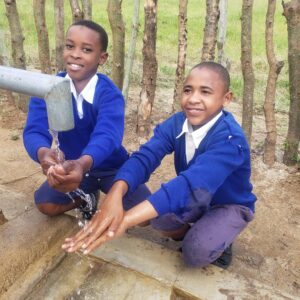
At the Nalangiomon site, 1,000 people are using the water from the well. Before the well they were using the local stream during the rainy season and digging a sand ditch in the stream bed during the dry season; a sand ditch is basically a hole dug until water is reached. The sediment is allowed to settle at the bottom of the ditch and then water is dipped from the hole into a bucket or jerry can.
Upon arriving, a group of Maasai women greeted us with song and dancing. Joining the group, we danced our way to the water well. The women shared that before the well was built, they were dirty and suffered from typhoid. One of the young women in the group showed me a place on her leg that is a type of fungus resulting from either drinking or bathing in salinic water.
I’ve learned a great deal about the Maasai on my trips to Tanzania. I respect that they continue to maintain their way of life. Although they aren’t killing lions as a rite of passage, they maintain their nomadic existence while also accepting some modern conveniences like cell phones. My curiosity led me to ask why they needed cell phones and whether it was to negotiate their cattle sales. Although Swahili is widely spoken in Tanzania, the Maasai have their own language called Maa. And because Tanzania was colonized by the British, English is also commonly spoken by most everyone.
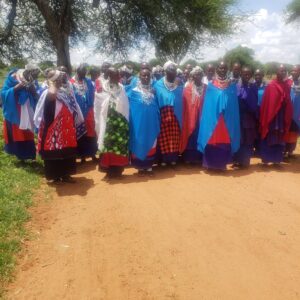
After a couple of days of bone jarring rides on the rugged roads on our way to visit project sites, I returned to Arusha to get the required COVID test before traveling to Uganda. After several conversations and visits to no less than six offices at the local hospital (the only place where the COVID test is offered) and a tip (some people might call it a bribe), I was able to receive the test which then required me to register online and then find a bank where I paid for the test at $50 per person. Not including the tip/bribe.
A common question when I tell people what I do for a living is about security. Being escorted by three Maasai definitely provides a sense of comfort. Plus, it isn’t every day that a girl receives a marriage proposal.
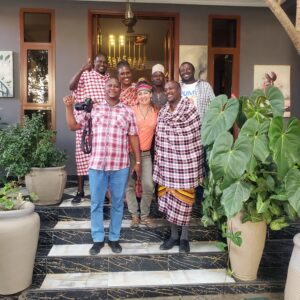
As our time in Tanzania draws to a close (Gashaw Semeneh W2T project manager is with me), we are both sad to leave so many of the wonderful people who have surrounded us on this trip, but we have more wells to visit, hands to shake, and beneficiary stories to hear.
__________________________________________________________________________________________________________________________
What I saw in Uganda
And why it is “the Pearl of Africa!”
Plus sanitary efforts to keep girls in school
As my time wraps up in Uganda, I visit schools that have received water points through Water to Thrive and another funder, Blood Water out of Nashville, Tennessee.
Providing a well or safe water point is more than just water, it provides opportunities for other initiatives. Our partner in Uganda, PaCT, focuses on education, healthcare including prevention of diseases, maternal and infant health, human rights and economic empowerment.
Included in their education and water components, they work with schools in educating children about the importance of planting trees and other vegetation to prevent erosion and to provide fruit for the school. Songs are a great way to get children excited and to promote such ideas as washing their bodies, practicing safe hygiene such as hand washing and even education about menstruation!
Many young girls quit school because there are no private places to change their pads or because of embarrassment. The schools teach that menstruation is a normal part of life for a girl and they even involve the boys.
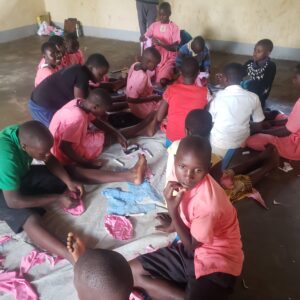
At one school, each class sent a representative in the production of reusable pads, boys included. The pads are sold in the market as an income generating activity. The proceeds are reinvested in the project. The school girls can purchase the pads at wholesale so that they can continue to attend school during their cycle.
Although much of Uganda is rural (80% of the population lives in rural areas) they are a country rich in biodiversity and offer much to the person willing to look deeper. In fact, Winston Churchill called Uganda, the “Pearl of Africa” due to the landscapes, wildlife, beautiful and warm people.
While leading vision trips with W2T donors, I like to expose travelers to the beauty they will encounter and not just see through the eyes of a westerner as we tend to focus on lack and poverty.
Even with many problems including lack of safe water to drink, Uganda is truly the Pearl of Africa.
Uganda straddles the equator so offers warm, sunny weather with lots of life giving rain. If you like wildlife, you can visit any one of their 12 game reserves or ten national parks where you can encounter the big five, go mountain gorilla trekking, or bird watching with 1,040 species.
On an afternoon of waiting for COVID results before traveling to Ethiopia, I was treated to some time in beautiful Jinja which is the source of the White Nile. Although I didn’t try it out, you can bungee into the waters, tube or kayak the rapids. However, when offered a dare to wade into the cooling waters of the Nile, I didn’t hesitate to take a dip.
Uganda is like many African nations and is comprised of many tribes and languages, but due to the use of English, it is an easy country for Americans to visit.
I’ve missed being here and love visiting the staff at the many lodges and places we stay. It is heartwarming to know they’ve been awaiting my arrival for almost two years. Most heartwarming is the thanks I receive knowing that the work of Water to Thrive is addressing a big problem for so many people in the rural areas.
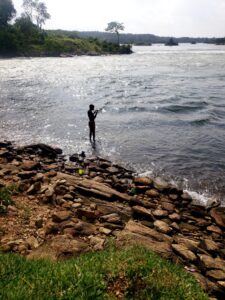
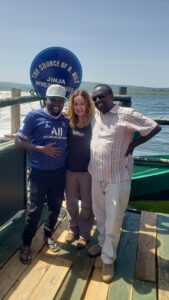
Even with many problems including lack of safe water to drink, Uganda is truly the Pearl of Africa and I welcome any interested travelers to join me on the next W2T vision trip. I promise – you’ll be tired, hungry, hot, thirsty…you’ll laugh a lot and will probably cry as well, but most importantly, you’ll be changed and see how many experiences offer the chance to reset your perspective and become someone with a softer heart and a more giving soul.
________________________________________________________________________________________________________________________
My Last week in the Ethiopian Highlands
A visit to maternity clinics with partner Mekane Yesus
After the heat and humidity in Tanzania and Uganda and the dry heat of Northwest Ethiopia, it was a nice change of climate to move to Hawassa in Southern Ethiopia. Although moving south would make it seem that the temperature would move upwards, being in the highlands means the temperatures are much more temperate and even a touch of coolness in the early mornings.
The highlands are beautiful, green and lush. They remind me of being someplace tropical. As in many parts of Ethiopia, each is distinct in climate, dress, foods, and even language.
One village surprised us with clothing reflective of the the traditional style of Sidama. Also, distinct to the area are their homes which are made of beautifully woven, dried grass or reeds.
However, the need for water is ever present. A benefit of the highlands is there are many springs which is one of the project types that Water to Thrive supports. When a spring exists naturally, it can be capped, filtered and can then provide a clean and safe water source. Instead of a syphon pump used on hand-dug and borehole wells, a spring consists of a reservoir with taps.
Water to Thrive’s partner in southern Ethiopia (and in other areas) is Mekane Yesus South Central Ethiopian Synod. Mekane Yesus is the Lutheran Church and its development arm has operations across the country of Ethiopia.
In addition to wells or springs in individual villages, Water to Thrive is working with Mekane Yesus to bring water to maternal health clinics (134 is the goal). The project is partly being funded by a private foundation.
I visited some of the clinics to see the current conditions of the water situation. Deplorable is the most fitting word to describe what I saw. My heart breaks knowing that women give birth without access to clean water, toilets, showers or anything that is necessary for a sanitary environment. In fact, instruments were sterilized using buckets sitting on the floor that were filled with water and bleach.
The funding in place is not enough to complete all of the work, but faith is something I’ve leaned on when I’ve faced unfavorable odds. I know in my heart that there are many people who have a heart and the ability to make a huge difference in the lives of our sisters who are in desperate need of a little humanity.
This is the end of my trip. As I prepare to return to my home where water is always there with the turn of the faucet, I am thankful for what I have. However, I’m reminded that there is more work to be accomplished so that all God’s children receive the basic human right of clean, safe drinking water. – Susanne Wilson

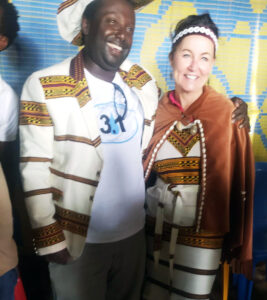
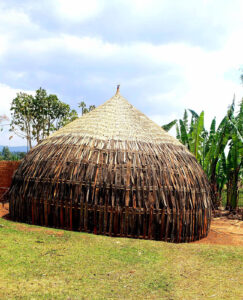
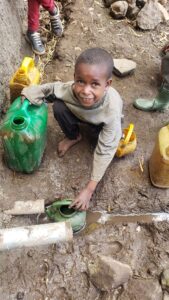
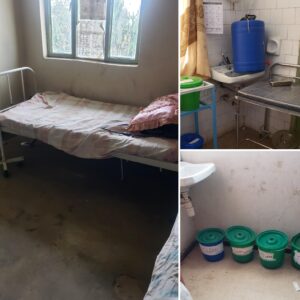
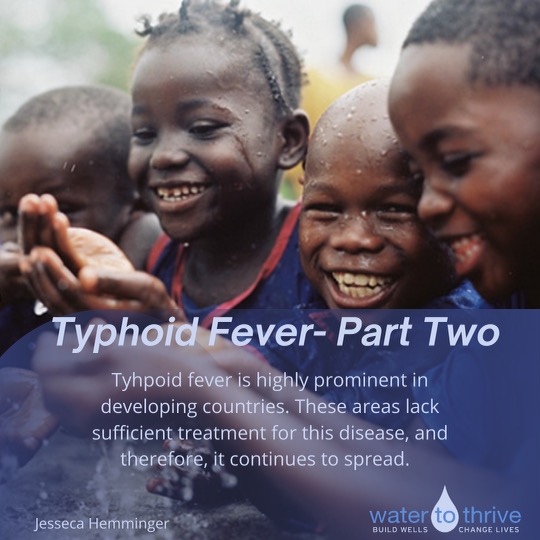

About The Author: Jamie Morris
More posts by Jamie Morris